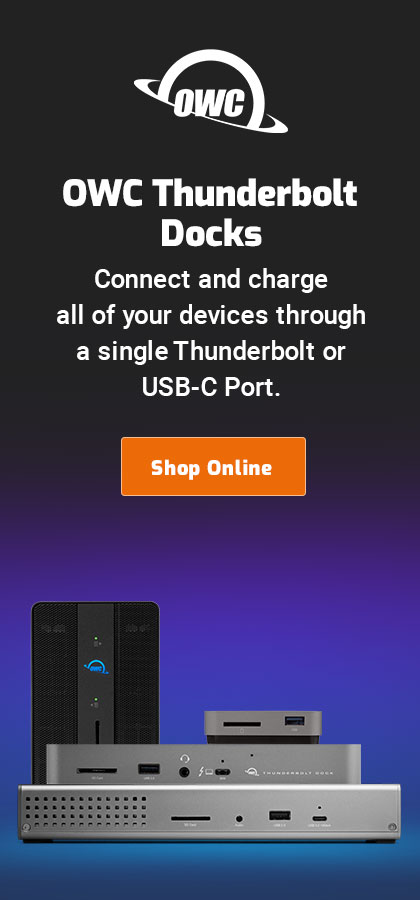
|

|

|

|

|
ioSafe N2 NAS Software Interface
This page shows some of the user interface—far from all of it, because it is extensive to support the wide-ranging feature set. Plug the unit in, connect it to your ethernet network and it’s ready to go.
I was impressed with the range of capabilities and the generally well done management approach that meant I had no need to read the manual.
But simple tasks should be easy and so they are—setting up file sharing functionality setup was quick and easy; I figured it out in under 30 seconds, so kudos to the interface design team. I had no need for bandwidth throttling and other sophisticated features, but wow—they’re there if you want the capability.
The extensive feature set does not mean that one can poke and prod in ignorance; this is a very sophisticated solution offering an extensive feature set that requires understanding the technology behind any given feature. The complexity is not in the ioSafe N2 product but in the capabilities themselves. In short, if you want FTP or a mail server, you have to understand what those things are to begin with. The user interface just gets out of the way and lets a knowledgeable administrator get the job done efficiently.
Control panel
The browser-based control panel offers an extensive array of capabilities.
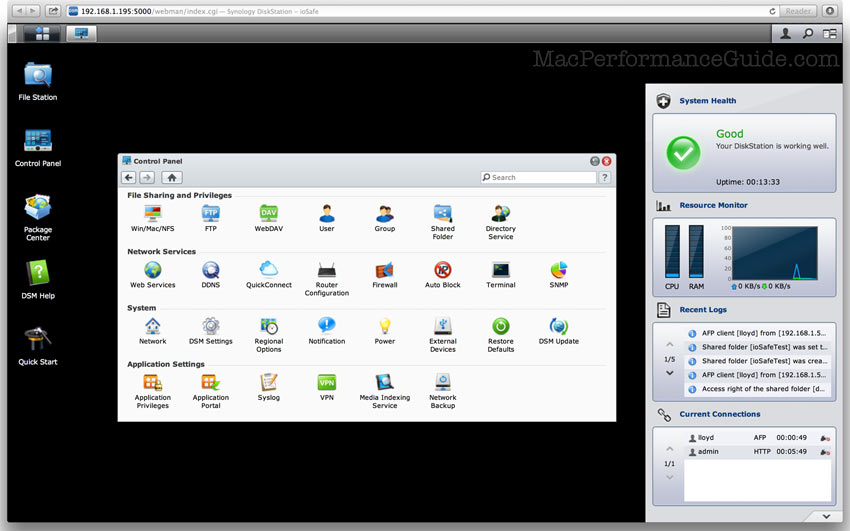
File sharing setup
Shown below is the window for enabling Mac file sharing, with Windows SMB and NFS also options for mixed workgroups.
One can also configure a Time Machine backup volume if desired.

Viewing which services are active
Currently active services are displayed in a rather confusing way: all but one of the services below (Mac File Service) are *disabled*, yet the Status shows with a checkmark. Even though it is a gray checkmark this is confusing: there is no status other than “off”. It ought to be something less at-a-glance ambiguous, such as be a “-” or the word “off”.
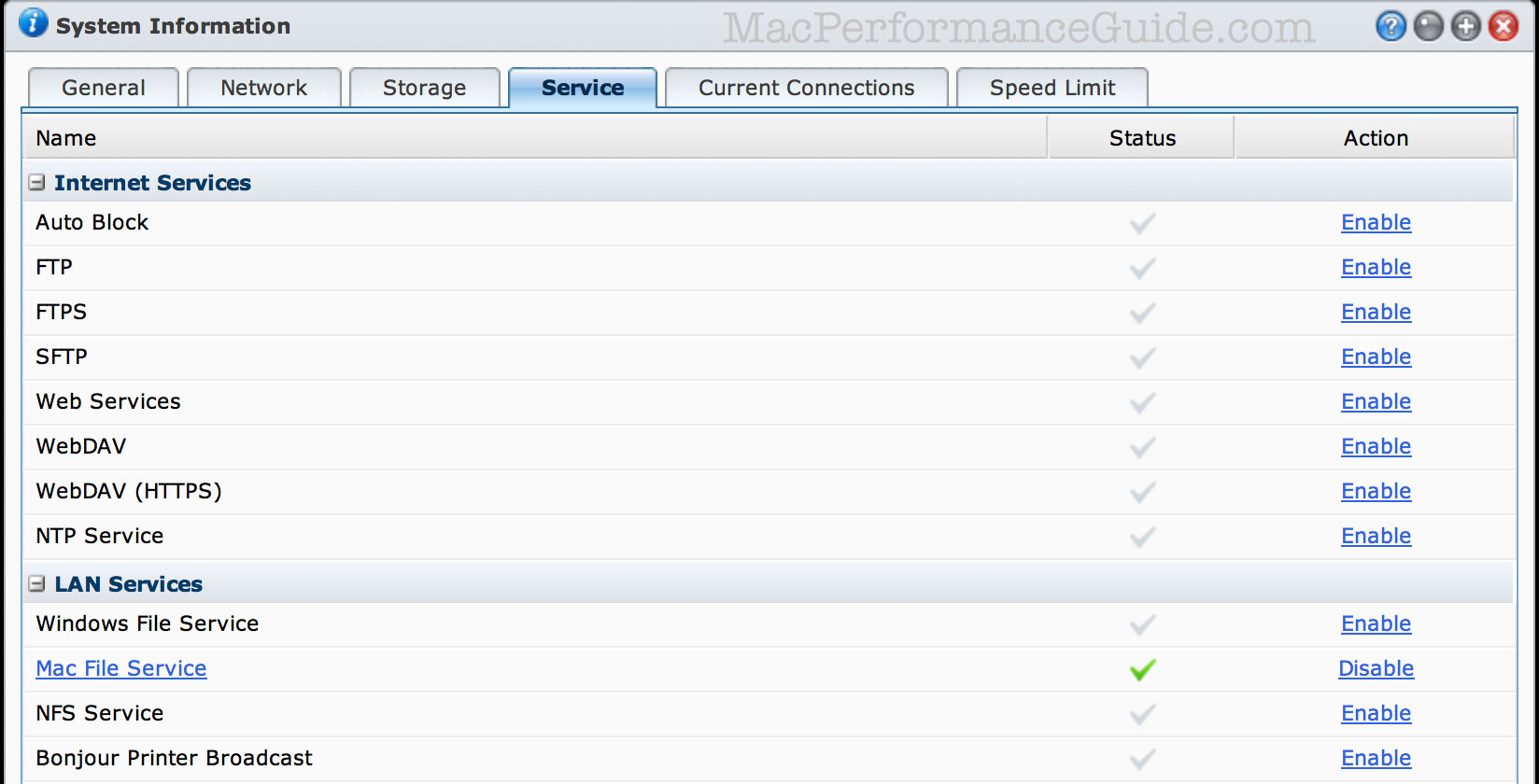
Monitoring ioSafe N2 performance
A standalone application offers performance monitoring for one or three or twenty ioSafe N2 units on the network. It can also be monitored in the web interface.
As shown below, disktester was used to write/read ten files of 1GB each to the unit (10GB total writes followed by 10GB reads), then read them a 2nd time (10GB reads). The maximum speed achievable for file-sharing over gigabit ethernet is around 110MB/sec as the reality of practical limits.
Using DiskTester create-files, write speed is around 38MB/sec and read speed around 80MB/sec, at least initially. The read performance improves to 108MB/sec when reading more than once, which approaches the real-world limit for gigabit ethernet.
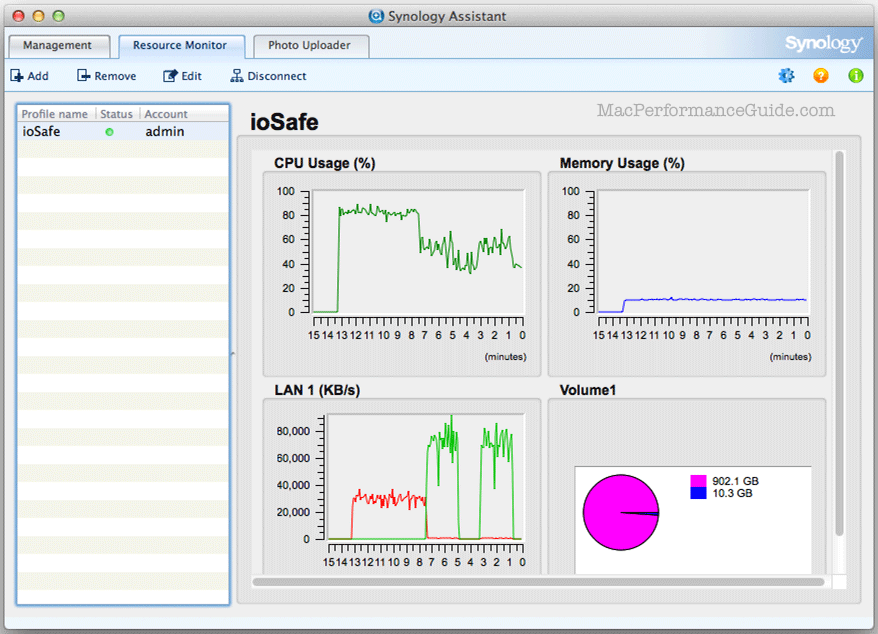
The main window in the browser-based interface also offers a summary view of the ioSafe N2 status.
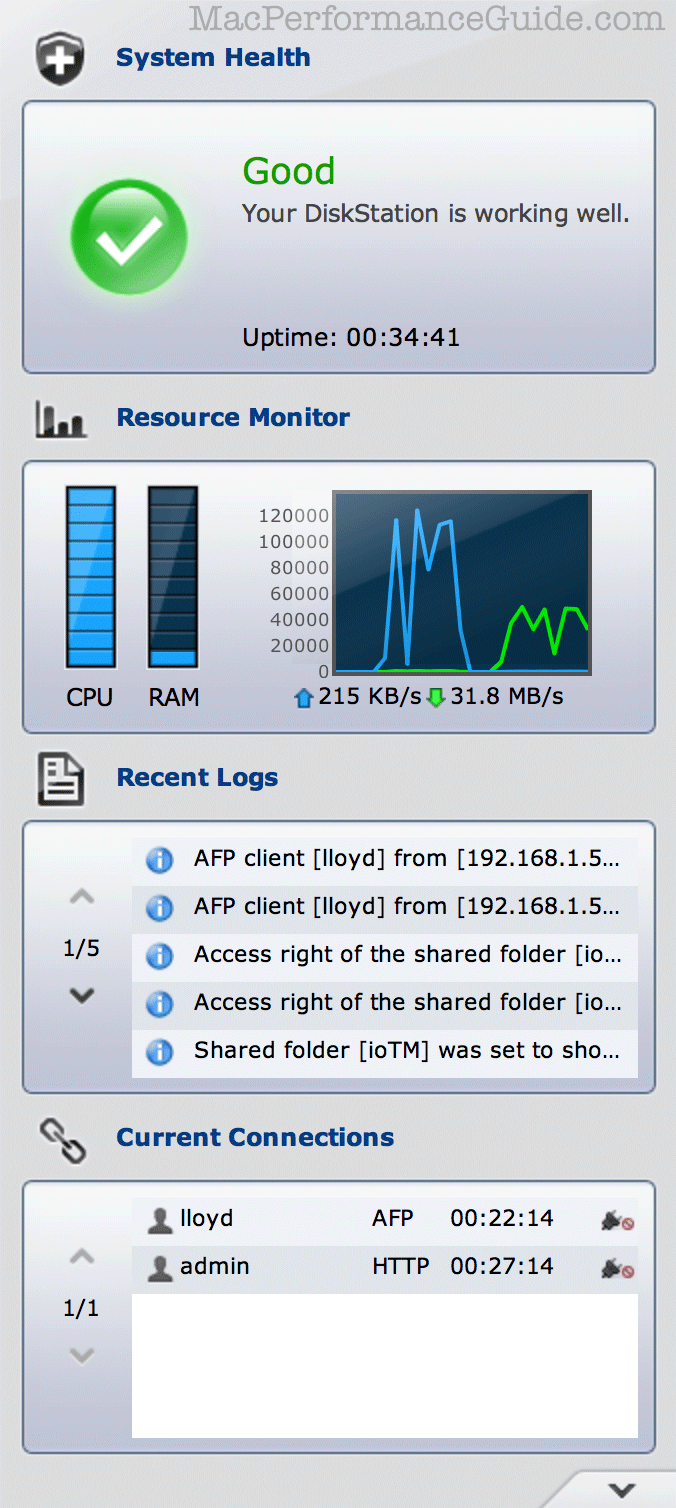

 diglloydTools™
diglloydTools™
